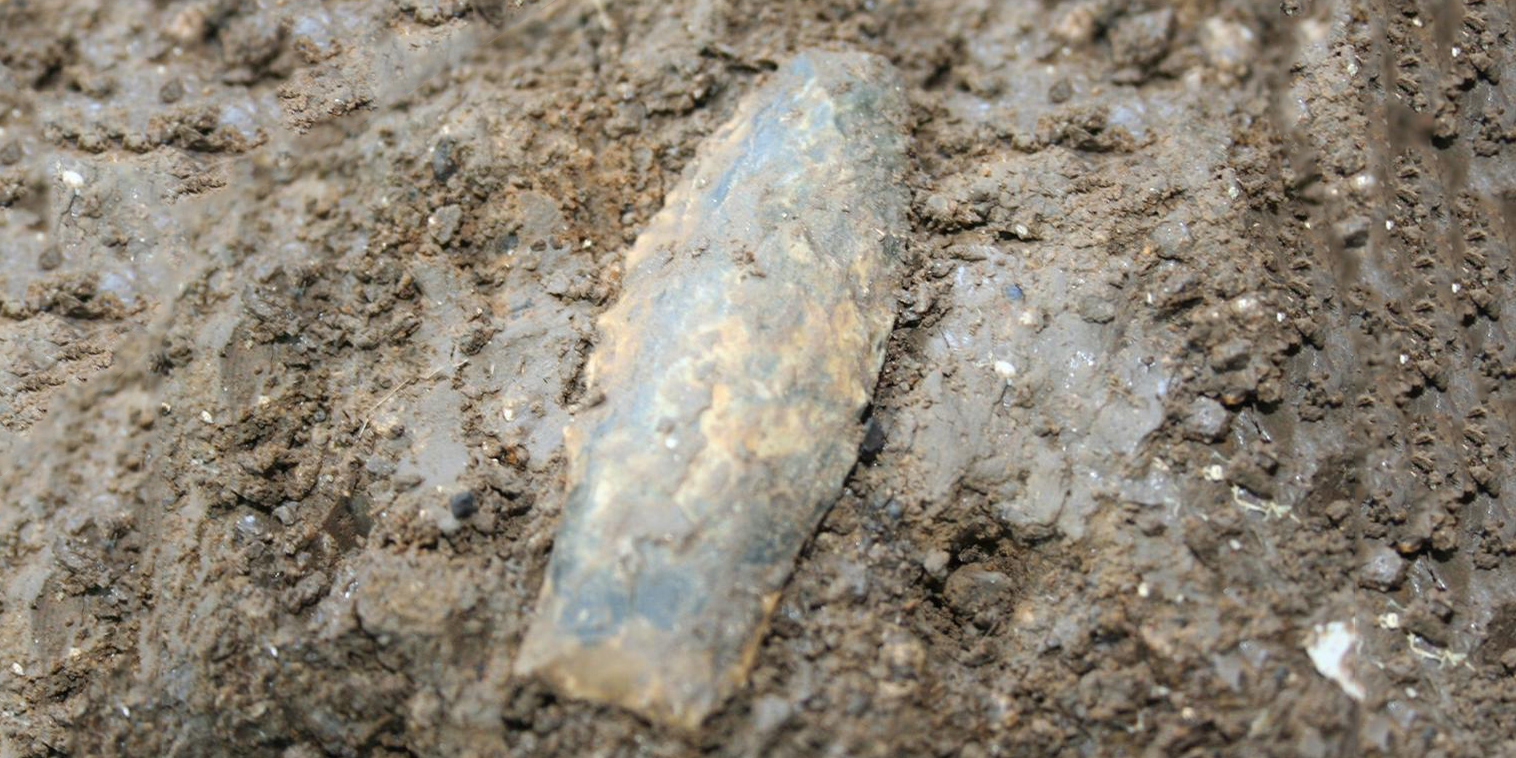Baylor geologists’ work may have identified the earliest known people in North America

For years, researchers from Baylor and other Texas universities have been working together on geology digs about 50 miles south of Waco, near Salado. They’ve been digging deeper and deeper, one millimeter at a time.
Recently, they found about 100,000 stone artifacts, including 12 projectile points like the one pictured above. Baylor researchers believe some of the artifacts and surrounding soil could be more than 15,000 years old — which means the people who used them might have been among the earliest people in North America.
For most of the last century, the prevailing theory has been that the first humans to populate the Americas were the Clovis people, traveling over the Bering Strait from Siberia to Alaska during the Ice Age. That theory has been challenged multiple times in recent years, including in 2011 when other 15,000-year-old artifacts were found in this same area. This new research from Baylor, Texas and Texas A&M provides even more evidence pointing to a new theory of North American settlement.
“We can’t say they’re the oldest points ever found, but so far it’s the best documented and vetted science that presents the oldest technology we know of right now,” Baylor geology professor Steve Forman, a co-author of the study, told the Waco Tribune-Herald. “As you go farther back in the pages of human prehistory, there are fewer and fewer pages, just snippets. What science is is an evolving progress report. We’re trying to add more pages to a really intriguing story of how and why humans came to North America.”
The research team’s work has been covered by everyone from Gizmodo and Popular Mechanics to the Washington Post, Newsweek and Forbes.
Sic ’em, Baylor geologists!

